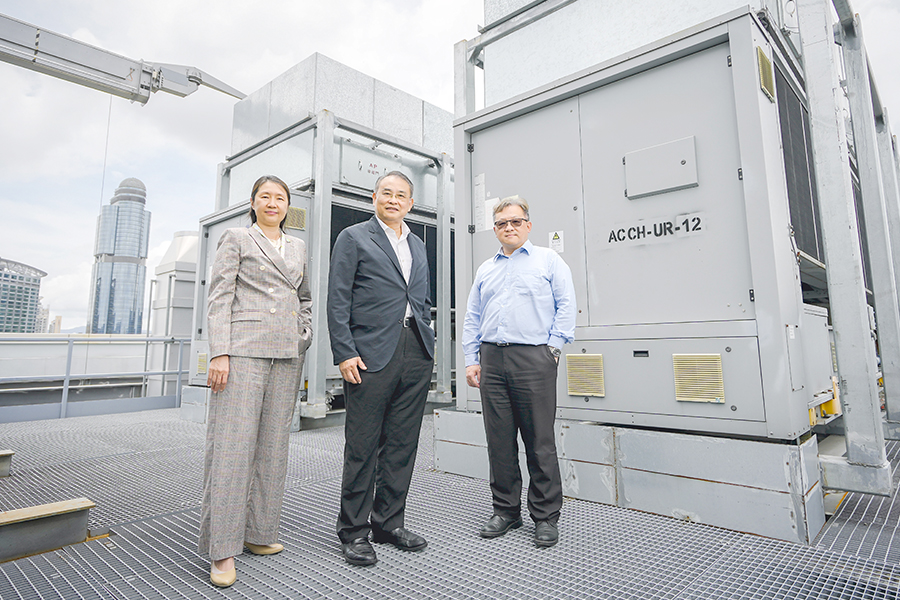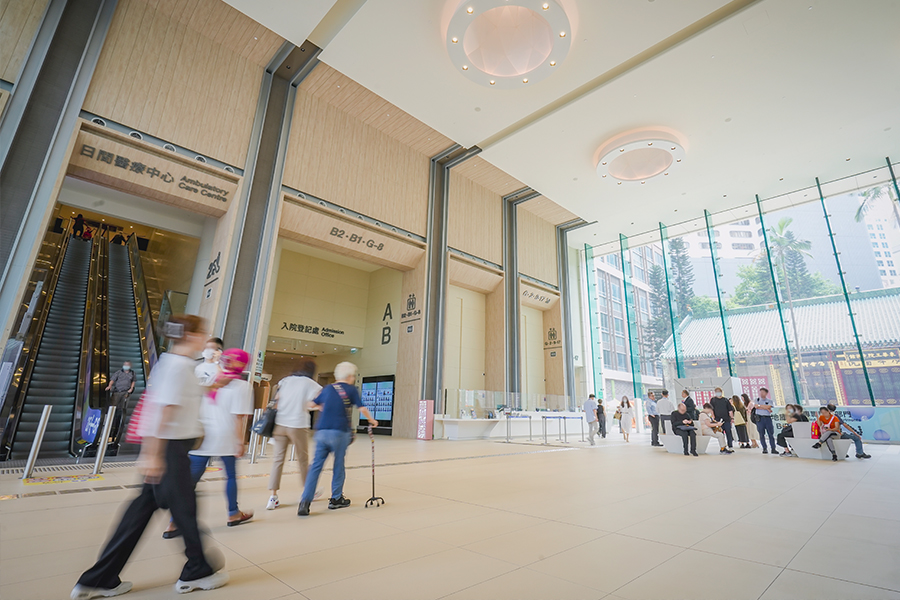Green hospital: Work together for energy saving and carbon reduction
 When entering Kwong Wah Hospital (KWH), you will find the soothing sunlight floods into the interior through floor-to-ceiling windows, by adopting the atrium mall concept. “Natural light not only positively impacts human health but the design behind it is also environmentally sensitive,” explains the Hospital Authority (HA) Chief Project Manager (Engineering) Yuen Pak-leung. “The hospital uses Low-E coating glass which effectively reflects heat with high light transmission, while reducing the demand for air conditioning and energy consumption.”
When entering Kwong Wah Hospital (KWH), you will find the soothing sunlight floods into the interior through floor-to-ceiling windows, by adopting the atrium mall concept. “Natural light not only positively impacts human health but the design behind it is also environmentally sensitive,” explains the Hospital Authority (HA) Chief Project Manager (Engineering) Yuen Pak-leung. “The hospital uses Low-E coating glass which effectively reflects heat with high light transmission, while reducing the demand for air conditioning and energy consumption.”
 Yuen points out that the energy-saving strategies implemented across hospitals have been notably effective. “Based on our past experiences with energy conservation, we developed a set of detailed design guidelines applicable to new projects under the HA, including the newly completed phase 1 building at KWH,” Yuen says. The guidelines cover aspects including the installation of smart energy monitoring systems, energy-efficient air conditioning, lighting and elevators, etc. “KWH’s central air conditioning system uses the then cutting-edge oil-free chiller with magnetic bearings which can reduce friction and eliminate the need for lubricants, preventing it from mixing with refrigerant that leads to energy consumption, also with the variable speed drive (VSD) control to enhance operational efficiency. In addition, water-to-water heat pump uses the heat expelled by air conditioning to preheat water from 20°C to 40°C, saving hospital energy on heating water.”
Yuen points out that the energy-saving strategies implemented across hospitals have been notably effective. “Based on our past experiences with energy conservation, we developed a set of detailed design guidelines applicable to new projects under the HA, including the newly completed phase 1 building at KWH,” Yuen says. The guidelines cover aspects including the installation of smart energy monitoring systems, energy-efficient air conditioning, lighting and elevators, etc. “KWH’s central air conditioning system uses the then cutting-edge oil-free chiller with magnetic bearings which can reduce friction and eliminate the need for lubricants, preventing it from mixing with refrigerant that leads to energy consumption, also with the variable speed drive (VSD) control to enhance operational efficiency. In addition, water-to-water heat pump uses the heat expelled by air conditioning to preheat water from 20°C to 40°C, saving hospital energy on heating water.”
Increased vegetarian meals on inpatient menus
KWH is committed to raising environmental awareness among staff, patients, and members of the public to help it achieve its carbon reduction goals. “It promotes sustainable diets and has increased vegetarian options on inpatient menus with five meat-free menus in every 28-day cycle, later to be increased to eight. By offering 104 vegetarian meals annually, we expect to reduce carbon dioxide emissions by 62 tonnes,” General Manager (Administrative Services) Macky Tung says. “We conducted extensive food tasting beforehand, creating delicious and nutritious dishes like vegetarian sweet and sour pork and Portuguese mixed vegetable stew.”Another carbon reduction measure is to control inhalation of anaesthetic agents. “The anaesthetic gases inhaled and exhaled by patients are greenhouse gases. KWH had discussions with anaestheseologists on the effective use of anaesthetic agents such as nitrous oxide, which has led to a reduction in use by one half compared with 2015.” says Macky. Besides, the hospital will continue to explore the feasibility of recycling medical items such as medicine bottles, medicine bags, and inhalers.